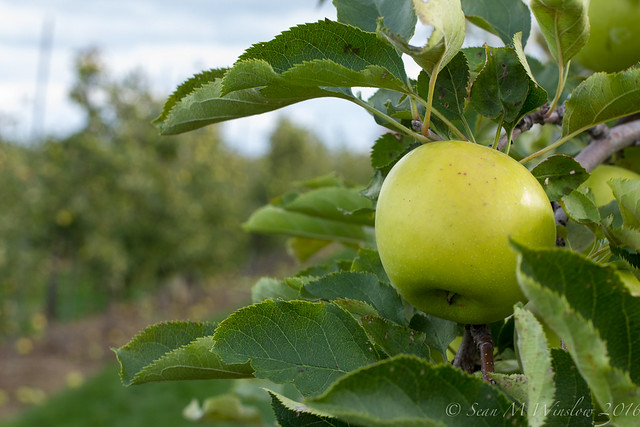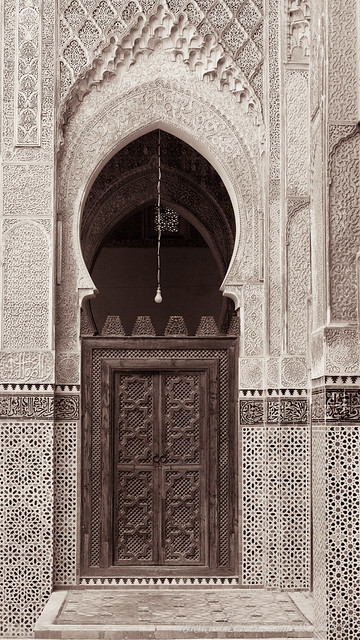Category: General
Posting not related to another, more specific, category.
Wishing Everyone an Otter-ly Delightful Christmas
This was my Christmas card from my girlfriend this year, a handmade otter-in-a-Santa-hat. If you have not explored the phenomenon of otters on the internet, do yourself a favour and watch one of these videos:
www.youtube.com/watch?feature=player_embedded&v=2fp9X…
or
dailyotter.org/2012/12/10/two-lonely-river-otters-meet-an…
and visit The Daily Otter Blog: dailyotter.org/
Doorway, Bou Inania Madrasa, Fez, Morocco, 2007
In London. . .
I am in London for the week and Oxford for the weekend, consulting Ethiopic manuscripts. I will not be updating the site and will rarely check my email during this time.
Happy Thanksgiving!
A very Happy Thanksgiving to all my American readers, and especially my family and friends back in the States, most of whom I have not seen in over a year. I am looking forward to returning to California over the holidays (23rd December to 12th January), and will hope to see you then. Also to my friends here in Ethiopia, at the U. S. Embassy Addis Ababa, who have kindly hosted me and whom I will likely also miss having Thanksgiving with, due to a planned Axum trip.
Take care, all.
Leaving on Research
I am heading out in the morning for Lalibela, Gonder, and Andabet, working on research. I will be posting intermittently or not at all for the next few weeks, as I will likely only have internet access for a small portion of the trip.
Ethiopian Manuscript Heritage Problems and Preservation Strategies
I recently lectured to both the first- and second-year classes of Heritage Preservation and Paleoenvironment students at Mekele University on the problems facing manuscript (and more general) conservation and preservation in Ethiopia. While not a full workshop (which I hope to conduct in November, if I can find funding to get back to Ethiopia), it was nevertheless an introduction to my work, the field, and the preservation/conservation challenges facing those tasked with preserving the knowledge and physical objects associated with the Ethiopian manuscript tradition.
While I have not the time to reprise the whole presentation, I will link here to the powerpoint portion, which outlines the talk, even as it only represents a small amount of what I said (I loathe talks where the presenter reads out his own slides, and will not do it myself). If this is of interest, I can go on at greater length, and if anyone finds this kind of material absolutely essential to their program, I am available to give this talk anywhere you care to pay my travel expenses to. . .
Update & Flickr Integration
I have updated to the latest version of WordPress, which should be essentially seamless on the user end. A more interesting update is that , starting with the last three posts, I am converting all the photos from being hosted on my site to being hosted by Flickr. What this means is that you can click on any photo to get to its Flickr page, and there you can leave a comment, favorite it, or use the sorting and search tools to look through my entire stream. I am going to try to work backwards and make all the photos behave like this, in order to better integrate the various presentations of my photos. I know that a number of people read this stream through imported notes in Facebook, and I assume it will work there with new notes, though it currently doesn’t with any note already imported.
I am still working on making my various Flickr sets appear in pages, so that I will have dynamically-generated sets on this site.
I promise that this is not going to become a forum for re-posting articles from The Online Photographer, but I thought this article and Mike Johnson’s response might interest the historians in my audience, as it is a photographic puzzle that really gets to the heart of the way that pre-conceptions, agendas, and lack of expertise can seriously impair our understanding of a historical source.
For the record, I am not particularly convinced by the ‘ON’ then ‘OFF’ argument, if for no better reason than that the former just ‘looks wrong,’ and I think I hold with those who suspect arrangement. The motivation of a person that stays hours at a place to produce an image less-illustrative of the point they were apparently trying to make is not clear to me either, so I think the psychology of the man does enter into it.
Kenji Nagai
Even if you do not follow photography news, I think you should take a look at this post on The Online Photographer, and follow the link to the story. These are the risks that journalists take to tell us of the policies and acts of some of the world’s most repressive regimes. I can only hope that this story, and Mr. Nagai’s dying photos, can help ramp up the pressure on the Burmese government to end military rule.



